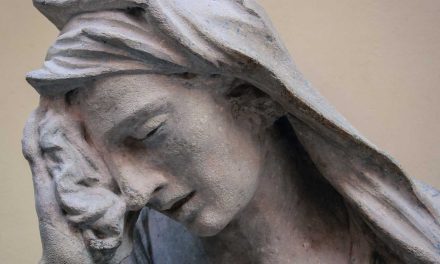In 1867 Lars Skrefsrud a Norwegian follower of Jesus and his Danish friend, Hans Borreson went to the Santal people of India to proclaim the gospel. After learning the language and culture, they started preaching the One True God and reconciliation through Jesus Christ.
Upon hearing the gospel, Kolean, a village elder proclaimed, “I think this stranger must be talking to us about Thakur Jiu. That must mean Thakur Jiu has not forgotten about us!” The people trembled at the thought.
Thakur Jiu was the name of the “genuine god,” the Creator of the all things. In Santal history, the people were expanding and decided on a massive migration. They came to a mountain that they could not cross. They cried out to Thakur Jiu but felt he did not help. So they turned to the demons and made a pact. If the demons would help them cross the mountain, then they would worship them. Not long after they found a pass that led them through the mountains, so believing this was an answer to the pact they made, they began to worship demons. They rejected the Creator and in time began to forget him.
Soon they were living in the bondage to the spirits. They were deeply remorseful that the ways of Thakur Jiu had been forgotten. They wanted relationship with him again but feared that he would not care for them again for the way the Santal had treated him at the mountain. Kolean said they as a people did not know how to become reconciled back to him.
The preaching of the gospel changed all that. Lars and his companion Hans began to preach how Jesus Christ died so they could be reconciled back to Thakur Jiu, Creator and the one “genuine god.”
The message exploded and people were baptized by the thousands.
God has Left Witness
“Yet he has not left himself without testimony” (Acts 14:17)
In every culture of the world there is a concept of God, the one true Creator. This is true even in the most remote villages deep in the jungles. We do not take God to people, he is already with them. We just bring the light of who God is and join Him in what he has already been doing.
This was the case in the gospel of John. While the name of the Creator for the Santal was Thakur Jiu, for the Hebrews it was Yahweh, for the Canaanites in the time of Melichizadek it was El Elyon, for the Europeans it was “Gott” or God as their creator, and for the the Greeks this creative God was name “Logos,” the mysterious divine force that orchestrates and unites all things in a changing universe.
Building upon what they already knew of God, the apostle proclaimed this “logos” that they knew as being with God and being God. He was the life force of creation so that “through him all things were made; without him nothing was made that has been made” (John 1:3). “In the beginning” this logos was there and was part of God and was God. The power of creation rested in this logos.
John affirmed their idea of logos, saying that this was logos was indeed through him all things had been made. He said that the logos was life and the life was the light of men. Those who rejected light live in darkness. And like all good deities, he sent a forerunner to testify to that light. That the logos that had come was indeed the light.
And when that divine came to the earth as a man, they did not recognize or receive him. But to those who did, they had the power/authority to become children of God.
Saying this alone would have been a startling thought to the Greek mind. This “logos” that is vague to us is indeed what we understand, but has also come to earth? And was not received? Where can I find this “logos”? How can I know this “logos” is actually true?
Again we read of the testimony of John, the Baptizer, the prophet in the wilderness. This logos is the fulfillment of what he had been preaching, that the one who would came after him would surpass him, because he was before him. And now this engimatic preaching of John was almost making sense. That the logos came in the flesh after John, the Wilderness Baptizer, but was “before him,” because the logo had always been.
The apostle John builds up the attributes of this mysterious identity, and then he says that the logos is “Jesus Christ,” full of grace and truth. “No one has ever seen God, but God the One and Only Begotten, who is at the Father’s side, has made him known” (1:18).
It’s amazing to think about, that the logos had now become flesh. Was their philosophy and belief now in human form? Now the question the Greeks would ask, “Is this true?”
So the Apostle John writes this:
“But these are written that you may believe that Jesus is the Messiah, the Son of God, and that by believing you may have life in his name” (Jn 20:31)
– Santal info from Don Richard’s “Eternity in their hearts”






